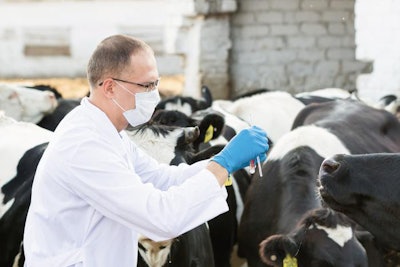
But researchers are still uncertain whether COVID-19 causes disease in livestock
The novel coronavirus (COVID-19) has the ability to enter the cells of multiple species, including livestock, but it’s not yet clear whether that means the virus causes disease in these species.
According to a preliminary report from The Pirbright Institute, which has not yet been subject to peer review, the adaptations that allow the COVID-19 virus to enter human cells also appear to allow it entrance into the cells of a wide range of livestock, wildlife and companion animals. The virus has a “spike glycoprotein,” which it uses to bind to certain receptors on cells in the lungs, heart and gastrointestinal tract.
For their study, researchers at the U.K.-based Pirbright Institute exposed cells from 22 other species with similar receptors to COVID-19. The study determined that, while COVID-19 used the receptors of other species differently, the virus was capable of entering the cells of multiple species via these receptors.
The research suggests that COVID-19 enters the cells of dogs, cats and rabbits most easily, but can also enter the cells of ruminants such as sheep, goats and cattle.
“Our research identifies species where viral entry is most efficient, allowing our scientists to prioritize research on animals that might be susceptible to disease,” Dr. Dalan Bailey, who heads the viral glycoproteins research group at Pirbright, said in a statement. “We also identify animals that could provide good experimental models for understanding COVID-19, such as hamsters and rabbits.”
The research does not, according to a Pirbright spokesperson, determine that animals such as rabbits or cattle would develop disease if exposed to COVID-19, nor does it demonstrate whether the virus can spread from animals to humans. These conclusions require further research.
The study does, however, have important indications for future COVID-19 studies, potentially helping scientists understand why coronaviruses jump from one species to the next so easily. Answering that question could hold the key to preventing future outbreaks of COVID-19 and other viruses, according to Pirbright.
The study also points to a need for more research to determine whether humans could accidentally infect livestock or companion animals, and whether animals could spread the disease to humans, acting as a “reservoir” for the virus, according to Pirbright.
View our continuing coverage of the novel coronavirus (COVID-19) pandemic.











